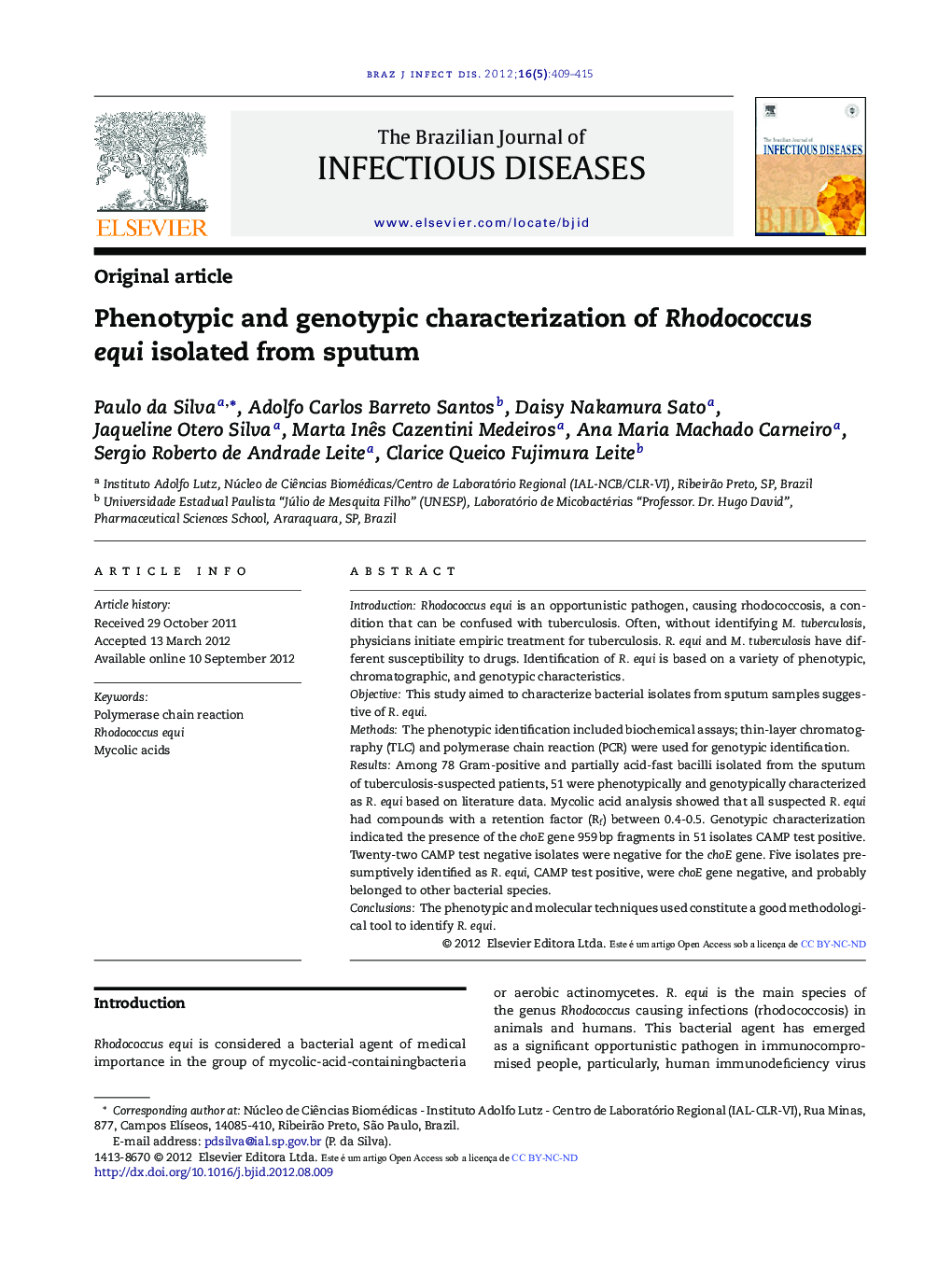| Article ID | Journal | Published Year | Pages | File Type |
|---|---|---|---|---|
| 3344328 | The Brazilian Journal of Infectious Diseases | 2012 | 7 Pages |
IntroductionRhodococcus equi is an opportunistic pathogen, causing rhodococcosis, a condition that can be confused with tuberculosis. Often, without identifying M. tuberculosis, physicians initiate empiric treatment for tuberculosis. R. equi and M. tuberculosis have different susceptibility to drugs. Identification of R. equi is based on a variety of phenotypic, chromatographic, and genotypic characteristics.ObjectiveThis study aimed to characterize bacterial isolates from sputum samples suggestive of R. equi.MethodsThe phenotypic identification included biochemical assays; thin-layer chromatography (TLC) and polymerase chain reaction (PCR) were used for genotypic identification.ResultsAmong 78 Gram-positive and partially acid-fast bacilli isolated from the sputum of tuberculosis-suspected patients, 51 were phenotypically and genotypically characterized as R. equi based on literature data. Mycolic acid analysis showed that all suspected R. equi had compounds with a retention factor (Rf) between 0.4-0.5. Genotypic characterization indicated the presence of the choE gene 959 bp fragments in 51 isolates CAMP test positive. Twenty-two CAMP test negative isolates were negative for the choE gene. Five isolates presumptively identified as R. equi, CAMP test positive, were choE gene negative, and probably belonged to other bacterial species.ConclusionsThe phenotypic and molecular techniques used constitute a good methodological tool to identify R. equi.
